Archaeology & History
An ‘Incredibly Rare’ Clay Figurine of a Roman God Surfaces in the U.K.
The find is one of many to emerge from Smallhythe Place.
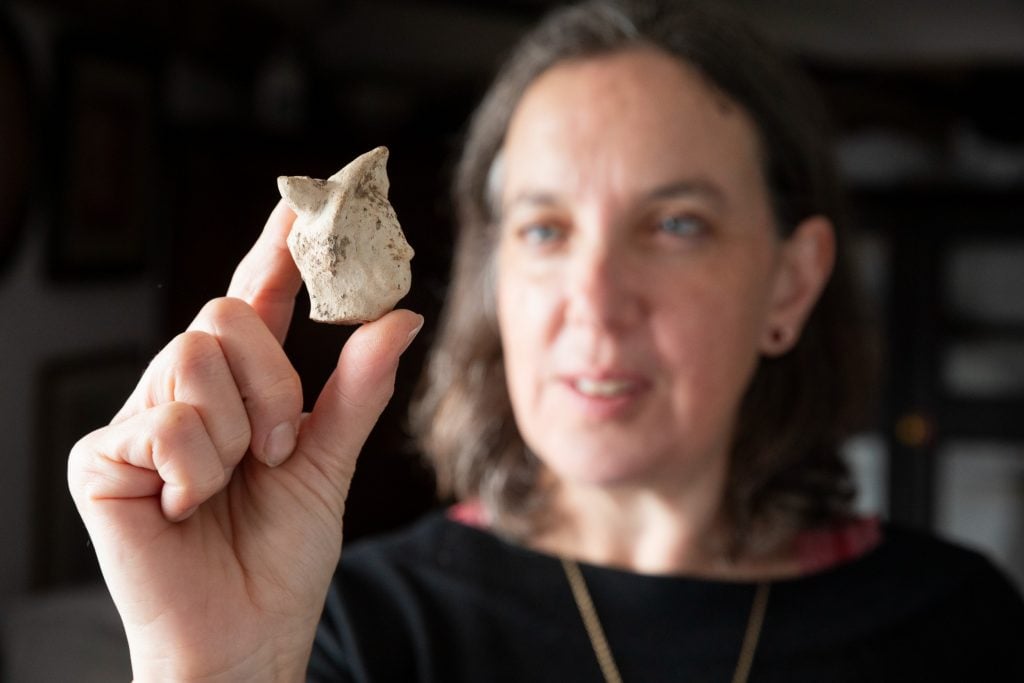
Archaeologists excavating Smallhythe Place in Kent, the U.K., have discovered the head of a small clay figurine of the Roman god Mercury—an “incredibly rare” find according to experts.
This isn’t the first discovery to come out of Smallhythe Place. A National Trust site located next to the river Rother, the area was once home to one of the biggest shipyards in medieval England. Several centuries before that, it was a small Roman settlement.

Fragments of Roman brick with combed design during excavation. Photo: Nathalie Cohen, courtesy of National Trust.
According to the National Trust’s media release, the Mercury figurine was probably made between the 1st and 3rd century C.E. At the time, Roman polytheism still played an important role in the imperial provinces. Matthew Fittock, an archaeologist at the University of Reading who specializes in Roman ceramics, said such clay figurines “were mainly used by civilians for private religious practice in domestic shrines and occasionally in temples and the graves of often sick children.”
This particular figurine is special because it is made from pipeclay, a material that had to have been imported from France or Luxemburg. Most pipeclay figurines found in Britain depict female goddesses like Venus. The vast majority of Mercury statuettes found on the island, by contrast, are made of metal.
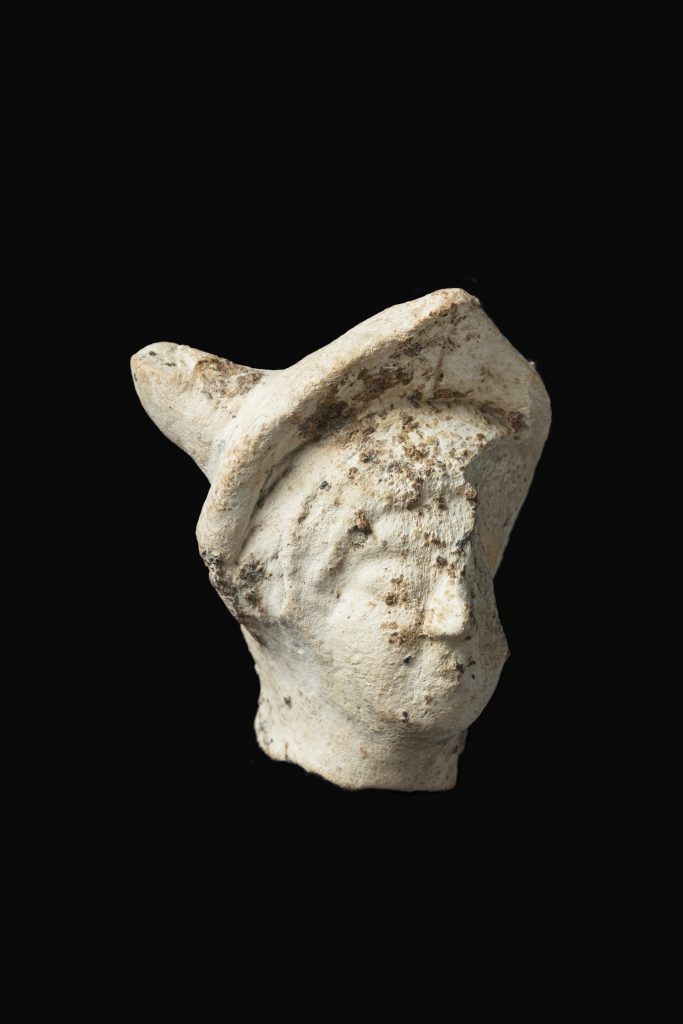
Roman head of Mercury found at Smallhythe. Photo: James Dobson, courtesy of National Trust.
Regrettably, the archaeologists only found Mercury’s head. The complete figurine, the team believes, would have probably depicted the male god standing, either naked or dressed in a short cloak and holding his signature caduceus, a staff comprised of two intertwining snakes.
It’s possible the figurine was broken deliberately. “Rather than pieces being discarded because they were broken,” noted Fittock, “there is evidence to suggest that deliberately breaking some figurine heads was an important ritual practice, whereas whole figurines are usually found in graves. Few single pipeclay heads are known in Britain, some of which may have been votive offerings.”

Piece of a Samian dish showing the potter’s mark. Photo: James Dobson, courtesy of National Trust.
The figurine joins a large and diverse collection of ancient and medieval treasures to come out of Smallhythe and are kept on display at the property, including building foundations, pottery shards, marmalade jars, gin, beer, medicine bottles, and animal bones. These finds suggest that the site was originally used as a farm and, later, a dump for domestic waste.
See more images of the finds below.
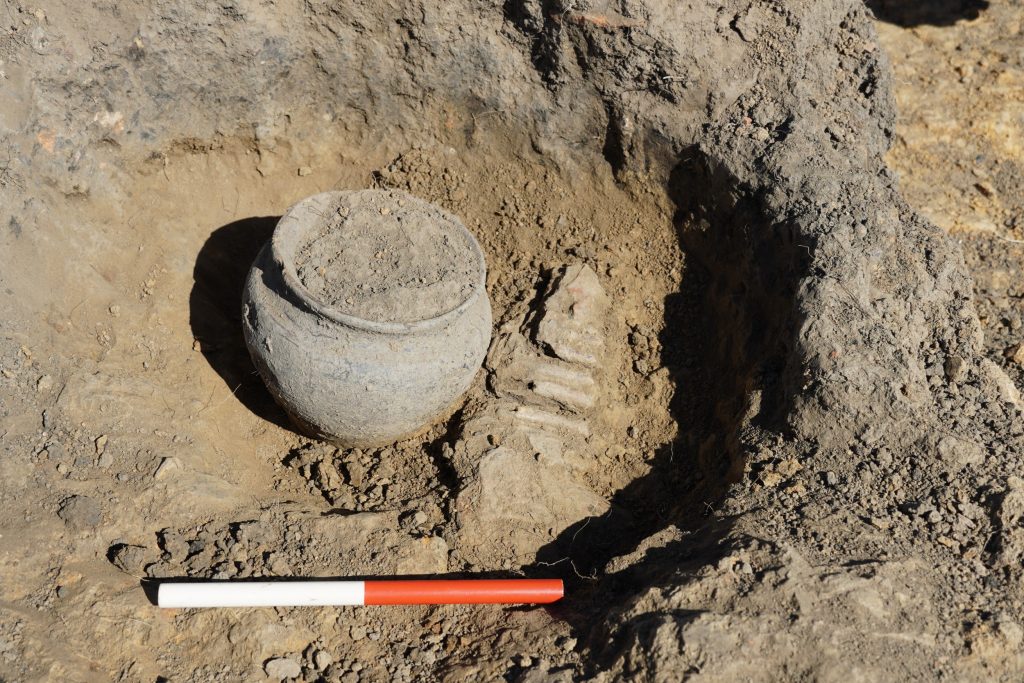
Intact Roman pot found during excavation. Photo: Nathalie Cohen, courtesy of National Trust.
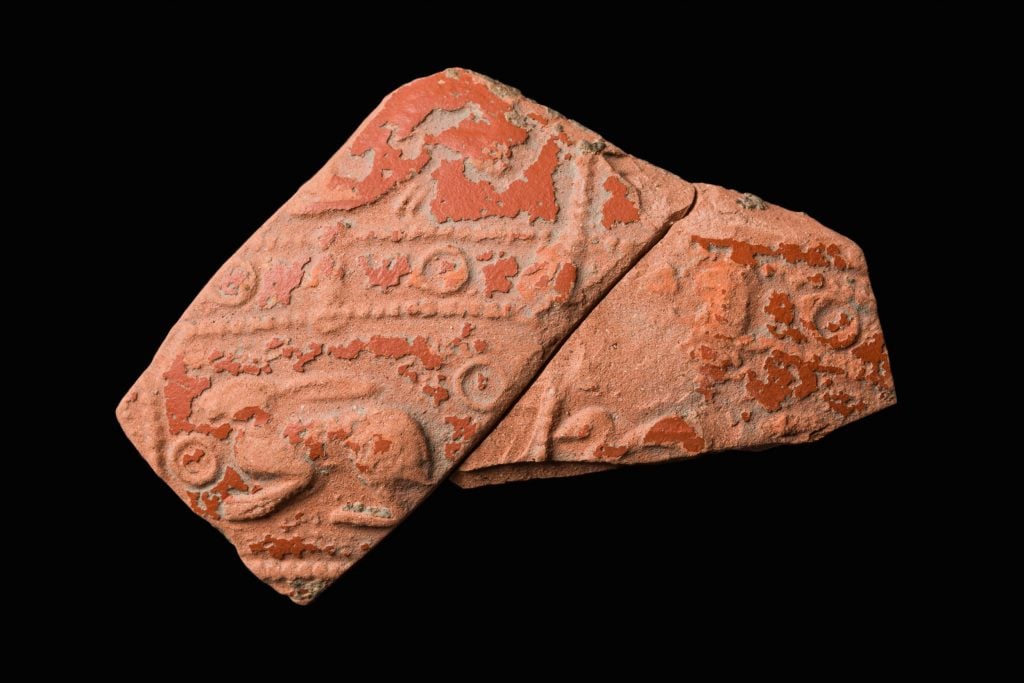
Worn fragments of decorated Roman Samian ware. Photo: James Dobson, courtesy of National Trust.
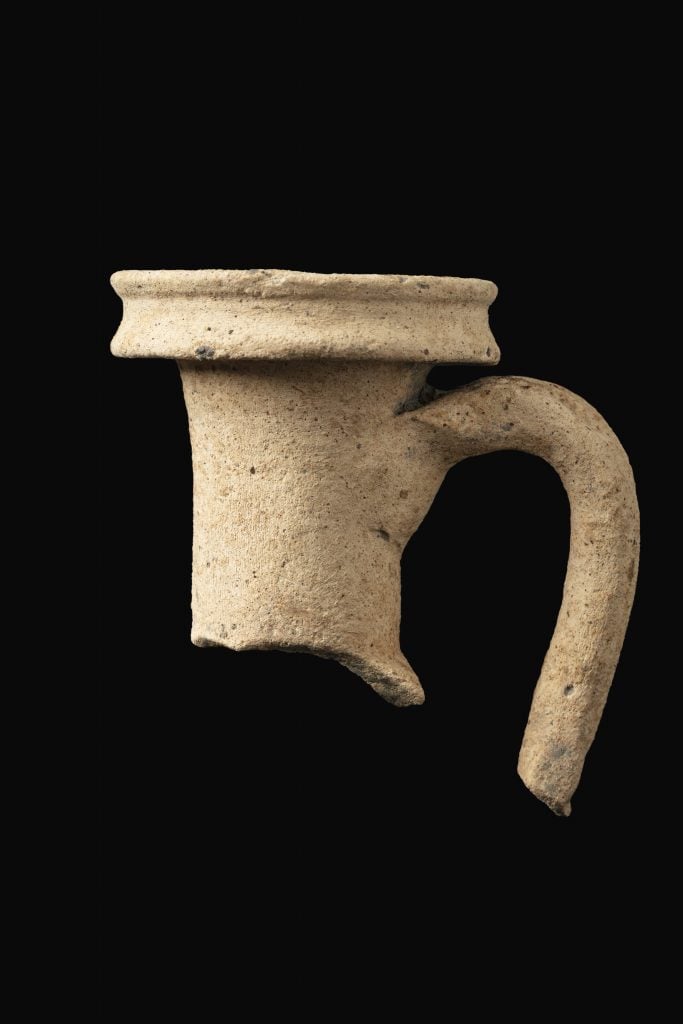
Fragment of a flagon dating to the 1st–2nd century. Photo: James Dobson, courtesy of National Trust.
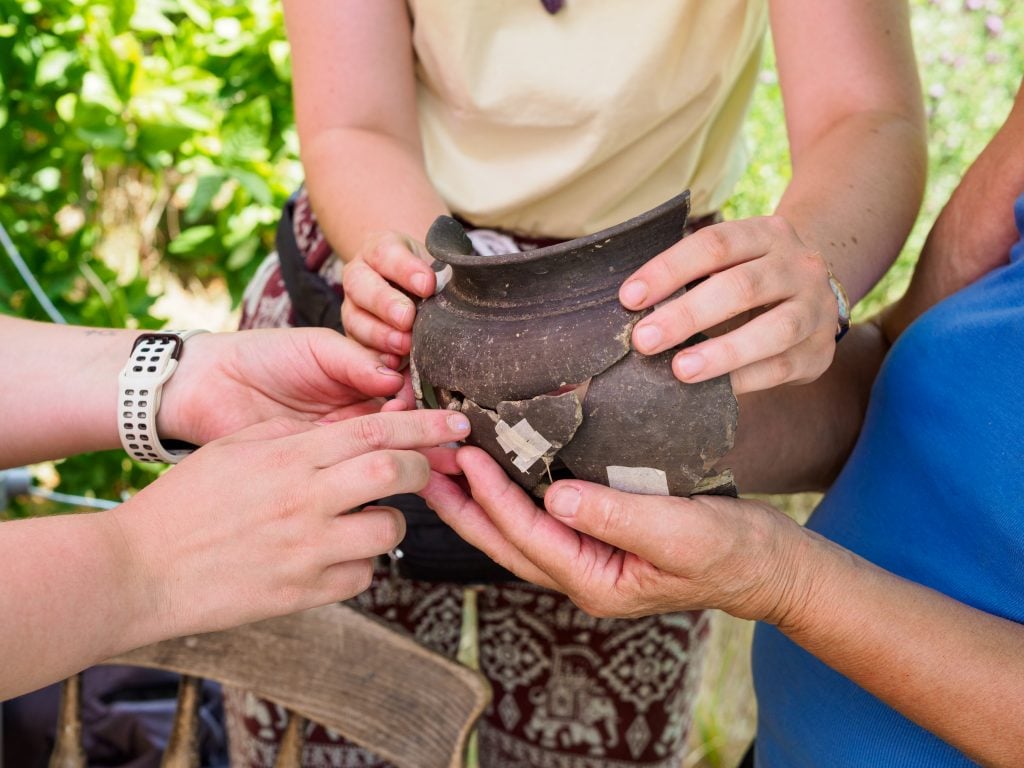
1st-century Roman port during reconstruction. Photo: Sam Milling, courtesy of National Trust.
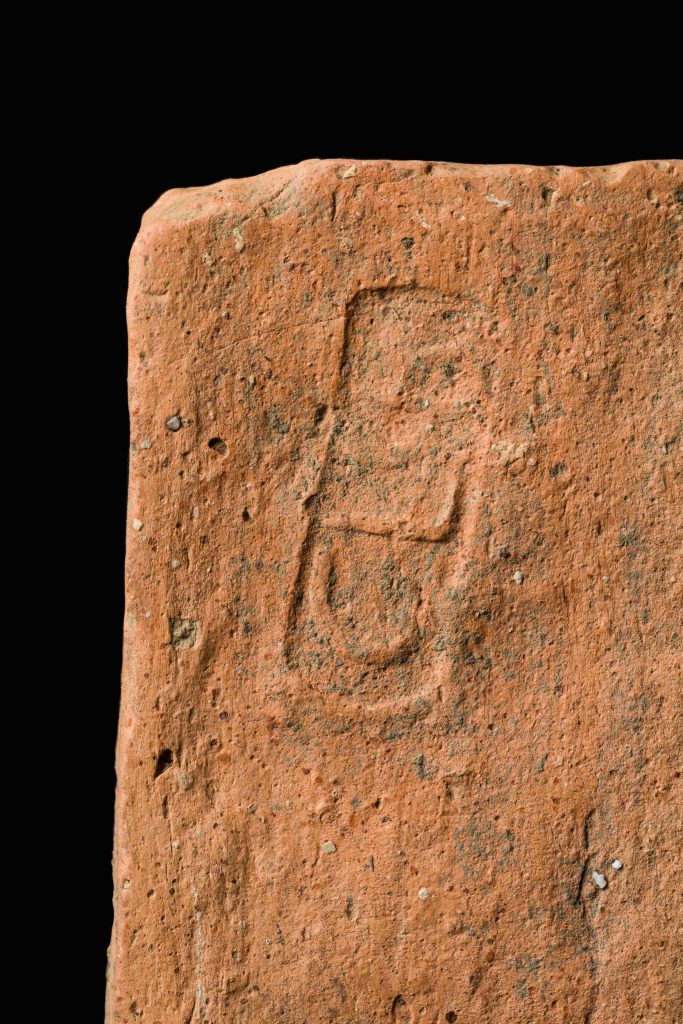
Part of a Roman tile stamped with the mark of the Roman fleet. Photo: James Dobson, courtesy of National Trust.





